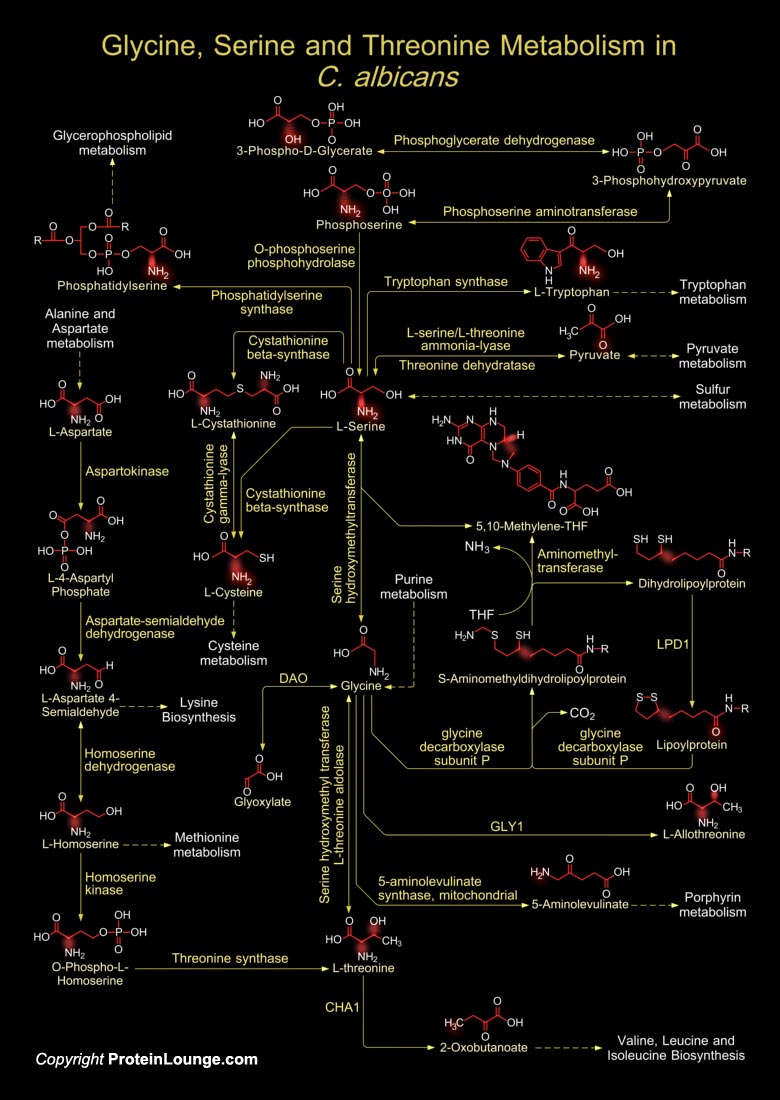
Like many bacteria, yeast species can form biofilms on several surfaces. C. albicans (Candida albicans) colonizes in the surfaces of catheters, prostheses, and epithelia, forming biofilms that are extremely resistant to anti-fungal drugs. The protein Gcn4 (Transcriptional Activator Gcn4), a regulator of amino acid metabolism, is required for normal biofilm growth. The biochemical mechanisms including activation of the sulfur-amino acid biosynthesis pathway is a feature of C. albicans biofilms. For such reasons the metabolism of Glycine, Serine and Threonine is of vital importance as it regulates morphogenesis and virulence in C. albicans. Yeasts also use L-Serine or L-Threonine as sole nitrogen source for their survival. L-Threonine is generally synthesized from[..]
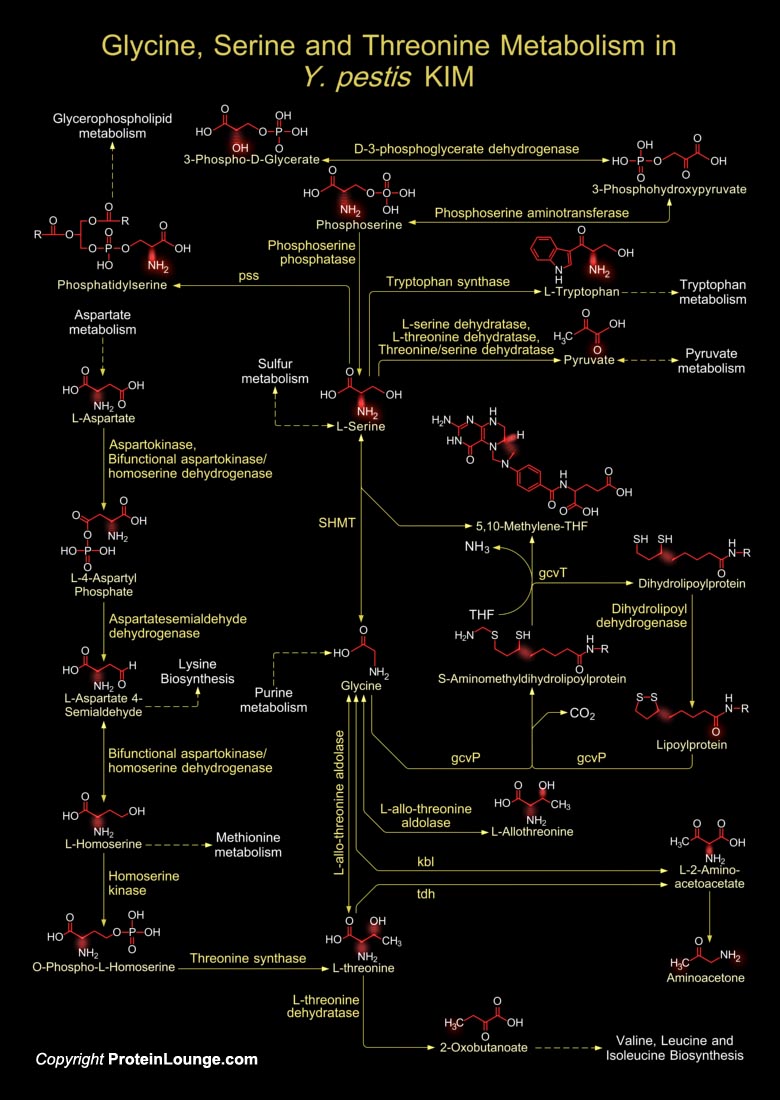
Y. pestis (Yersinia pestis) strand KIM belongs to biovar Mediaevalis. Y. pestis is actually catagorized into three subtypes or biovars; Antiqua, Medievalis, and Orientalis, each associated with a major pandemic and it is believed that Y. pestis is a clone that evolved from Y. pseudotuberculosis (Yersinia pseudotuberculosis) about 1.5 to 20 thousand years ago. Biovar Mediaevalis is thought to have descended from the bacteria that caused the second pandemic, the Black Death. The Black Death came in three forms, the bubonic, pneumonic, and septicemic. Each different form of plague killed people in a vicious way. All forms were caused by a bacterium called Y. pestis. This Coccobacillus is rod shaped, Gram-negative, and non-motile but has two distinct flagellar gene[..]
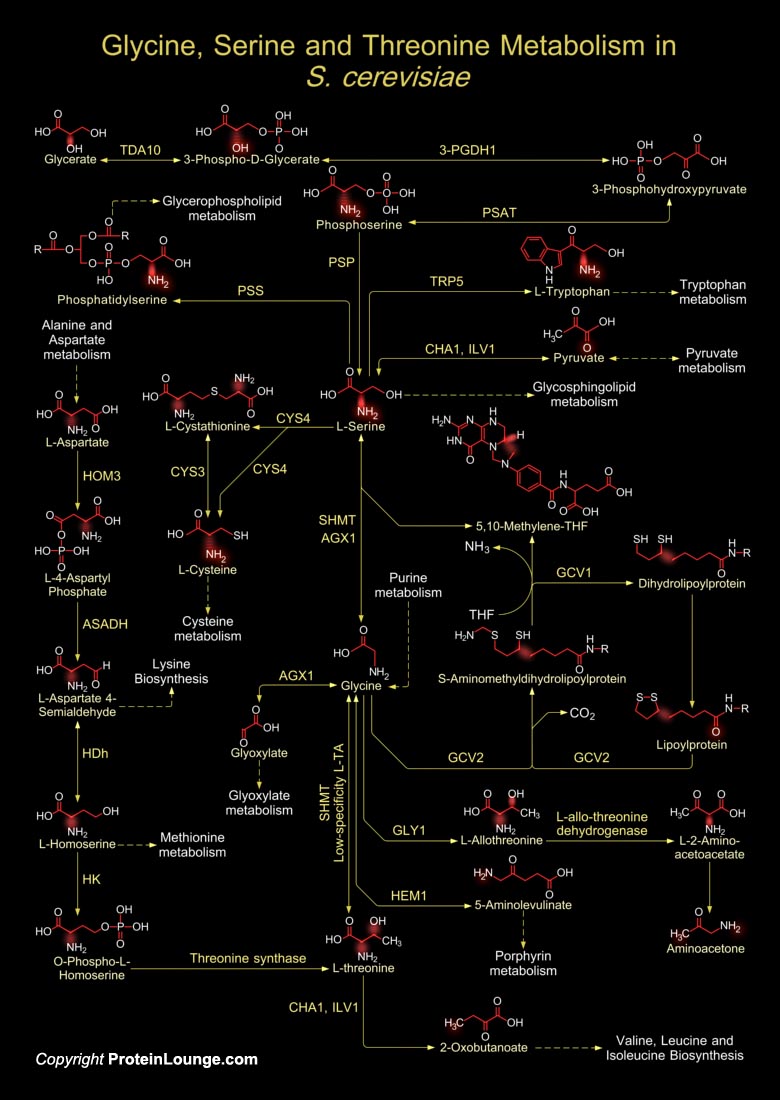
S. cerevisiae (Saccharomyces cerevisiae) are single-celled fungi which multiply by budding or in some cases by division (fission). Yeast fermentations comprise the oldest and largest application of microbial technology. Yeast physiology can be either obligately aerobic or facultatively fermentative. There is no known obligately anaerobic yeast. In pharmacy and chemistry, a large number of substances (Vitamins and enzymes) are extracted from this organism. In addition, some medications are now produced by manipulated yeasts, for example vaccines against Hepatitis-B surface antigen are produced by S. cerevisiae utilizing recombinant technology. The metabolism of Glycine, Serine and Threonine in S. cerevisiae is of vital importance as they use L-Serine or L-Threonine as[..]
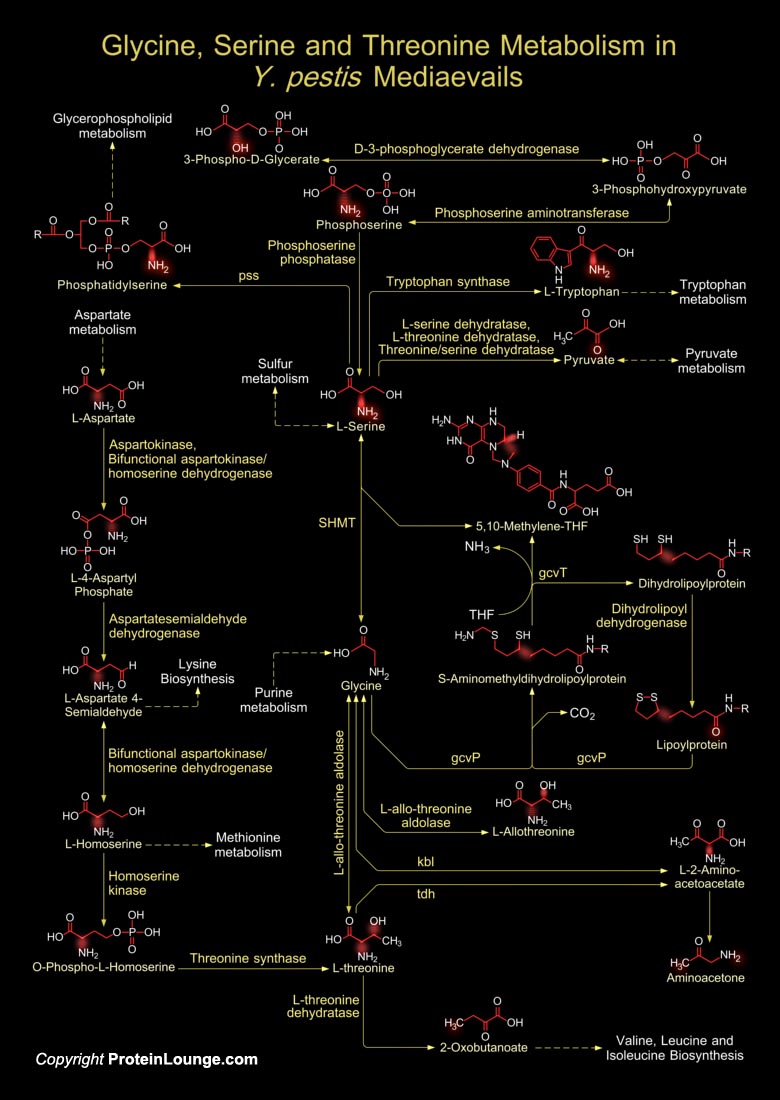
Y. pestis (Yersinia pestis) is rod shaped, Gram-negative, and non-motile but has two distinct flagellar gene clusters; one set is incomplete and the other produces a truncated protein, which acts as a transcriptional activator for the flagellar genes. Y. pestis, a Group-A bioterrorism agent, causes Plague, a re-emerging zoonotic disease transmitted to humans through flea bites and typically characterized by the appearance of a tender and swollen lymph node, the bubo. It is believed that Y. pestis is a clone that evolved from Y. pseudotuberculosis (Yersinia pseudotuberculosis) about 1.5 to 20 thousand years ago. Y. pestis is primarily a rodent pathogen, with humans being an accidental host when bitten by an infected rat flea (Ref.1). The rodents’ fleas, such as[..]
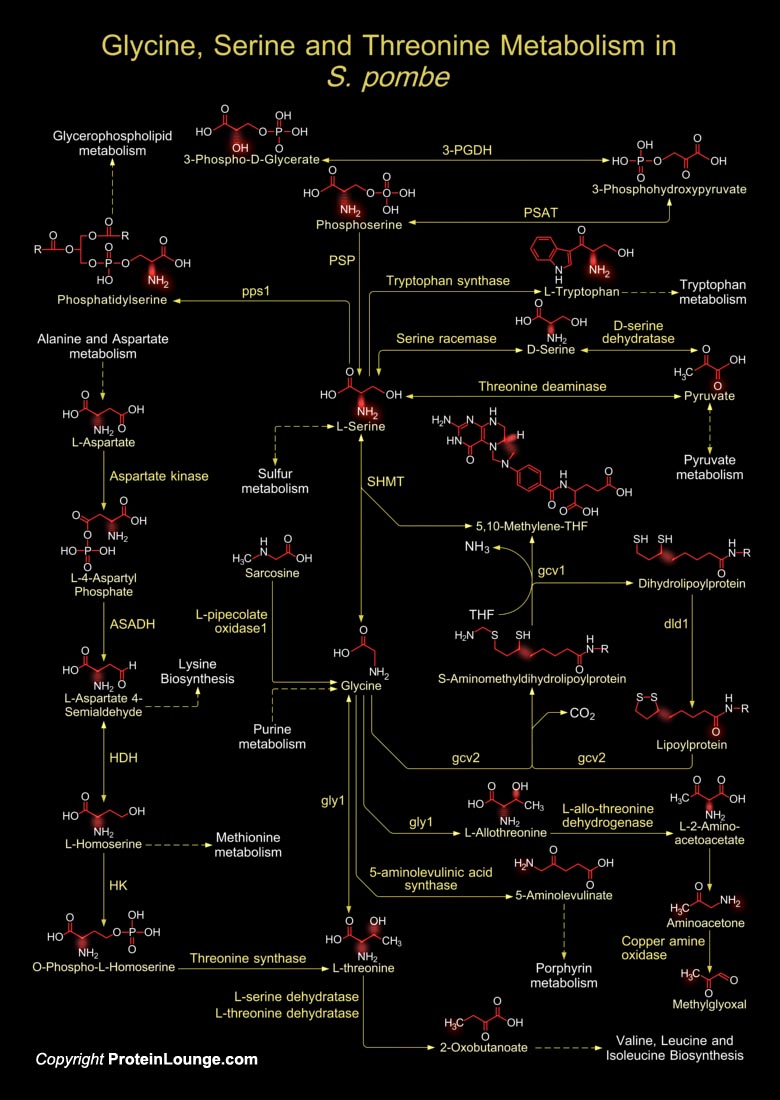
The metabolism of Glycine, Serine and Threonine is essential for the unicellular eukaryote S. pombe (Schizosaccharomyces pombe), as it uses L-Serine or L-Threonine as sole nitrogen source for its survival. During the metabolism of these amino acids, L-Threonine is generally synthesized from Pyruvate and L-Aspartate. The enzyme Threonine Ammonia Lyase/Threonine Dehydratase converts Pyruvate (from Pyruvate metabolism) to amino acids like L-Serine. Serine Hydroxymethyltransferase/Glycine Hydroxymethyltransferase then catalyzes the THF (Tetrahydrofolate) dependent cleavage of L-Serine to Glycine and 5,10-Methylene-THF (5,10-Methylenetetrahydrofolate). Serine Hydroxymethyltransferase is the major provider of one-carbon units in the cell, which are derived from catabolism of[..]
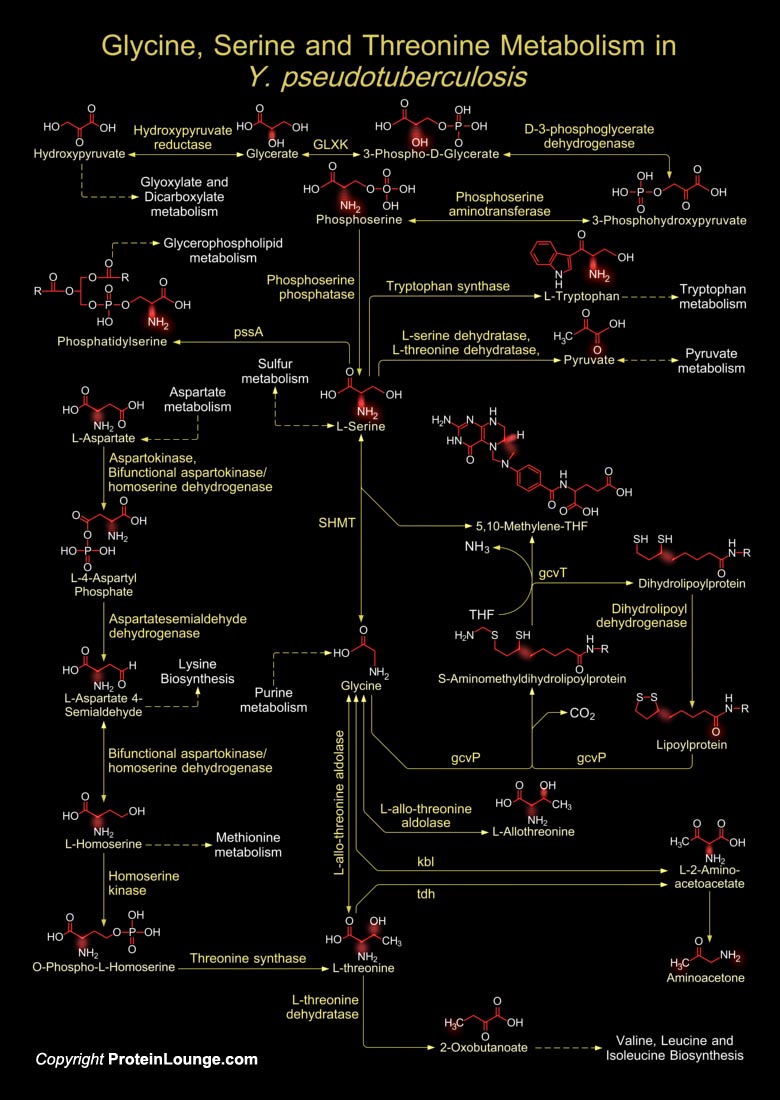
The genus Yersinia is known to include eleven species, three of which are potentially pathogenic to humans; Y. pestis (Yersinia pestis), Y. pseudotuberculosis (Yersinia pseudotuberculosis), and Y. enterocolitica (Yersinia enterocolitica). Y. pseudotuberculosis is a Gram-negative Coccobacillus belonging to the family Enterobacteriaceae. The designation pseudotuberculosis derives from the characteristic histopathological aspect occurring in mesenteric lymph nodes of Lymphoid Hyperplasia cases which closely resemble those observed during tuberculosis infection (Ref.1). Y. pseudotuberculosis is widely spread in the environment (soil, water, vegetables, etc). This bacterium is a primary pathogen of wild and domestic animals in all continents. Nearly all animal species are[..]
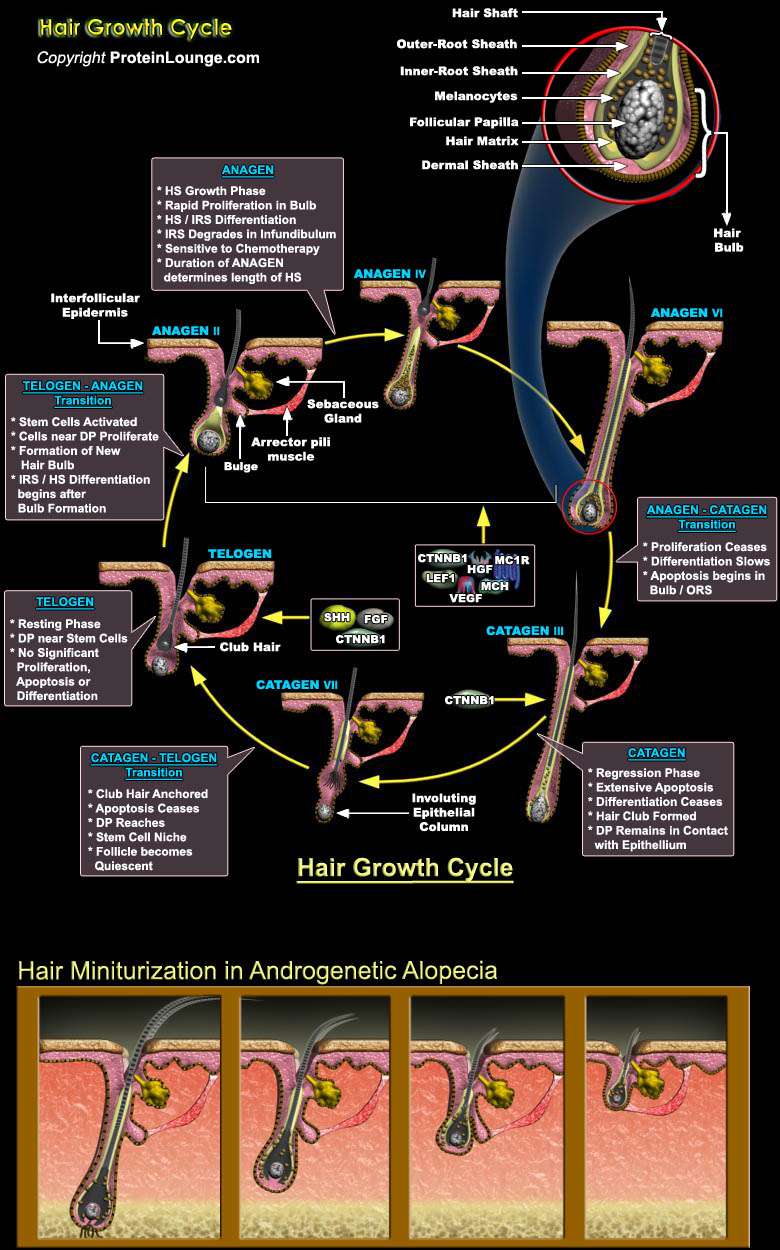
The hair follicle is a three-dimensional tube, composed mainly of epithelial cells that protrude down through the epidermis and dermis of the skin, enveloping at its base the mesenchyme-derived dermal papilla. These hair follicle acts as a sensory organ and immunologic sentinel for the skin. Hairs detect mechanical stimuli above the surface of the skin, and the slightest bend in a hair activates Neuroreceptors in the follicle, relaying important sensory information to the Nervous System. The Langerhans' cells (Dendritic Antigen-Presenting Cells) at the opening of the follicle detect surface pathogens and activate the immune system. The hair follicle has a complex immunologic profile, with immunologically "privileged" matrix at its base, and a complement of[..]
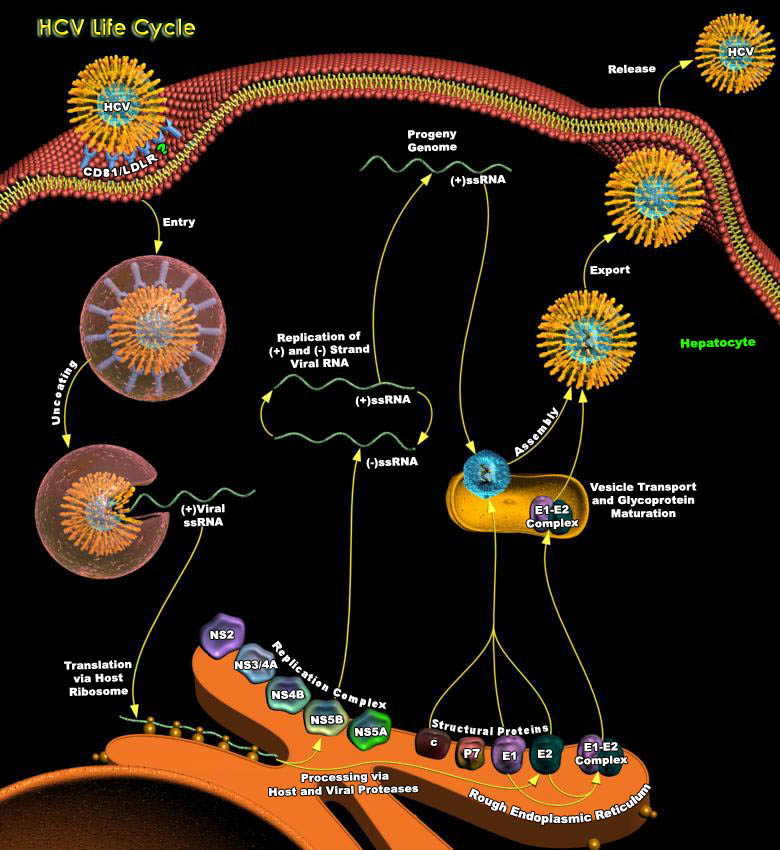
Hepatitis-C Virus (HCV) belongs to the Flaviviridae family and is the leading cause of chronic liver disease globally. It is estimated to infect about 170 million people around the world (WHO, 1997). Chronic HCV infection frequently leads to liver fibrosis and cirrhosis, and is associated with the occurrence of hepatocellular carcinoma. Acute infection occurs in only a few patients. In most cases the virus results in chronic infection taking 10–20 years before the emergence of liver disease, which is often accompanied by only mild or vague symptoms. Despite the seemingly benign onset of the disease, a significant number of patients with chronic hepatitis develop cirrhosis and its complications.HCV infects only humans and chimpanzees; there are no small-animal[..]
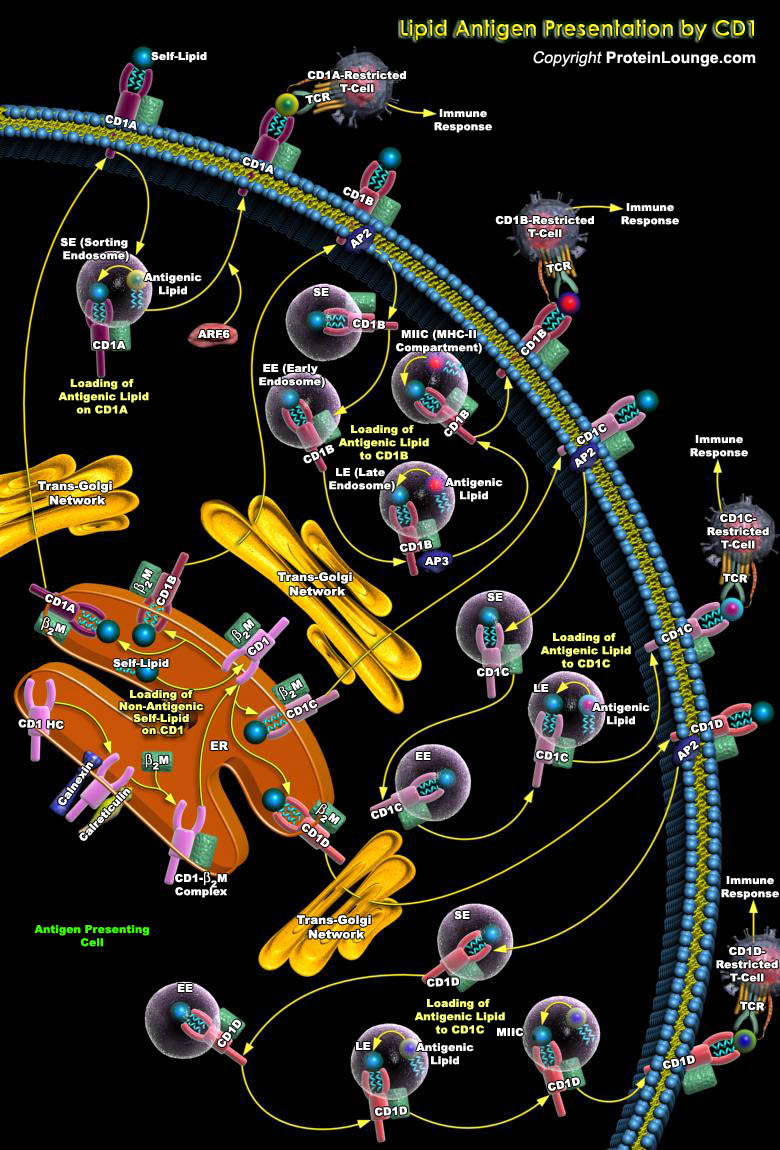
The CD1 (Thymocyte Antigen CD1) antigen presentation system presents lipid and glycolipid antigens to effector T-Cells, which have diverse roles in Antimicrobial responses, Antitumor immunity and in regulating the balance between Tolerance and Autoimmunity. CD1, a conserved family of MHC (Major Histocompatibility Complex)-like glycoproteins in mammals, specializes in capturing lipid rather than peptide antigen for presentation to T-lymphocytes (Ref.1). The CD1 family consists of five isoforms of non-polymorphic lipid antigen-presenting molecules, which are classified into two groups: Group-I (CD1A, CD1B, CD1C, and CD1E) and Group-II (CD1D), based on similarities between nucleotide and amino acid sequences. Topologically, they resemble the classical peptide[..]
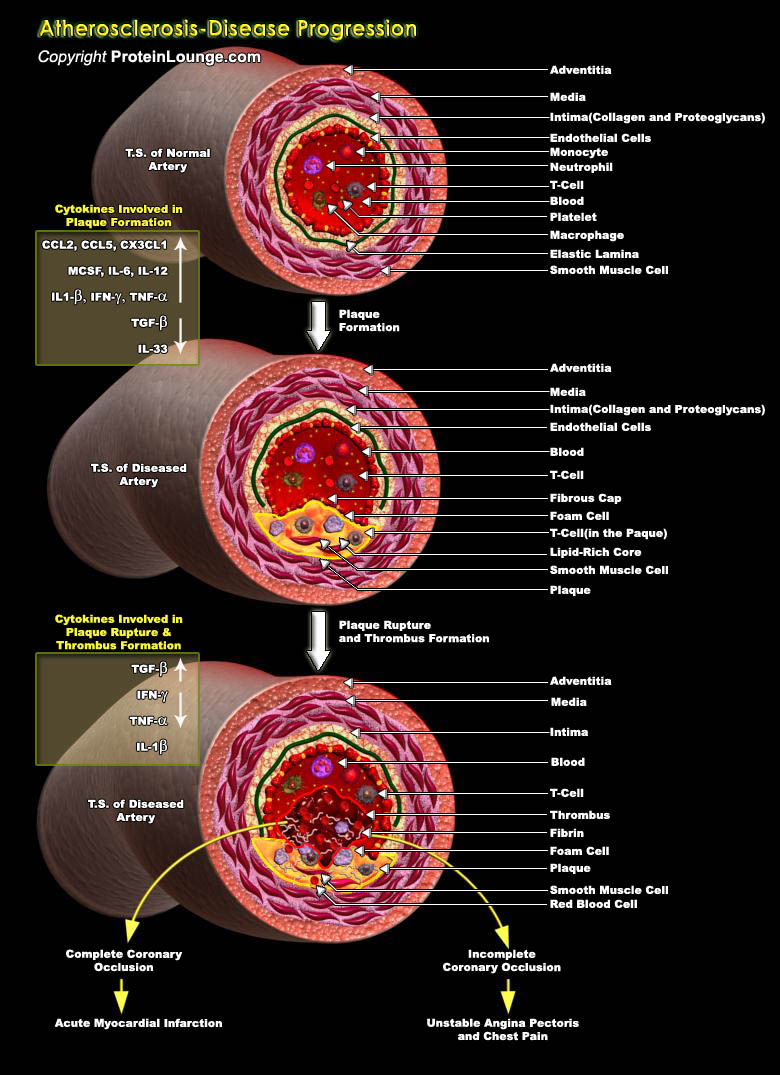
Atherosclerosis is a chronic disease, the prevalence of which has increased steadily as the population ages. Vascular injury is believed to be critical initiating event in pathogenesis of spontaneous atherosclerosis. Economic development and urbanization have promoted habits of diet rich in saturated fat and diminished physical activity, which favors atherosclerosis. Traditionally two types of atherosclerosis are described, spontaneous and accelerated. Accelerated atherosclerosis mainly occurs in patients after heart transplant, CABG (coronary artery bypass graft), and PTCA (percutaneous transluminal coronary angioplasty) [Ref.1]. The normal artery contains three layers. The inner layer, the tunica intima, is lined by a monolayer of endothelial cells that is in contact[..]
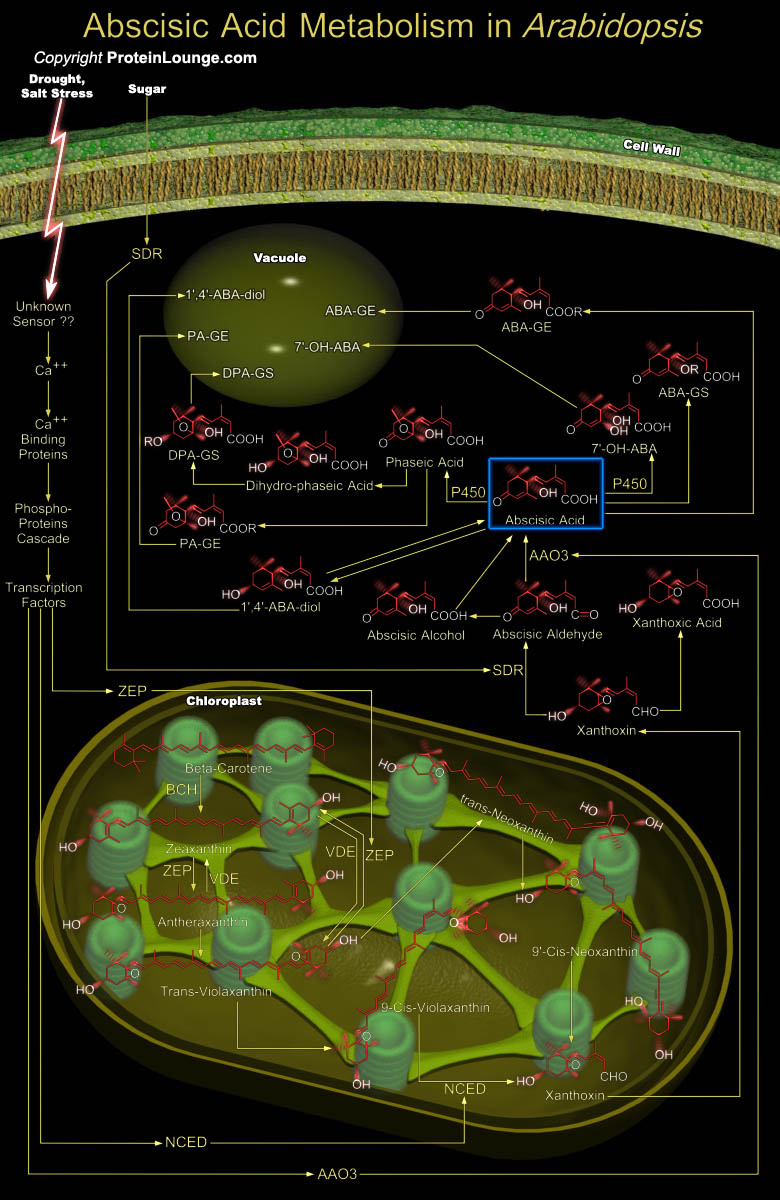
ABA (Abscisic Acid) is a plant hormone that plays important role during many phases of the plant life cycle, including seed development and dormancy, embryo maturation, cell division and elongation, and in plant responses to various environmental stresses such as drought, salinity, cold, pathogen attack and UV radiation. However, despite the name, it does not appear to control Abscission directly; the presence of ABA in Abscising organs reflects its role in promoting senescence and/or stress responses, the processes preceding Abscission. ABA is a sesquiterpenoid (C15H20O4) with one asymmetric, optically active Carbon atom at C-1'f. The naturally occurring form is S-(+)-ABA; the side chain of ABA is by definition 2-cis,-4-trans. Trans, trans-ABA is biologically[..]
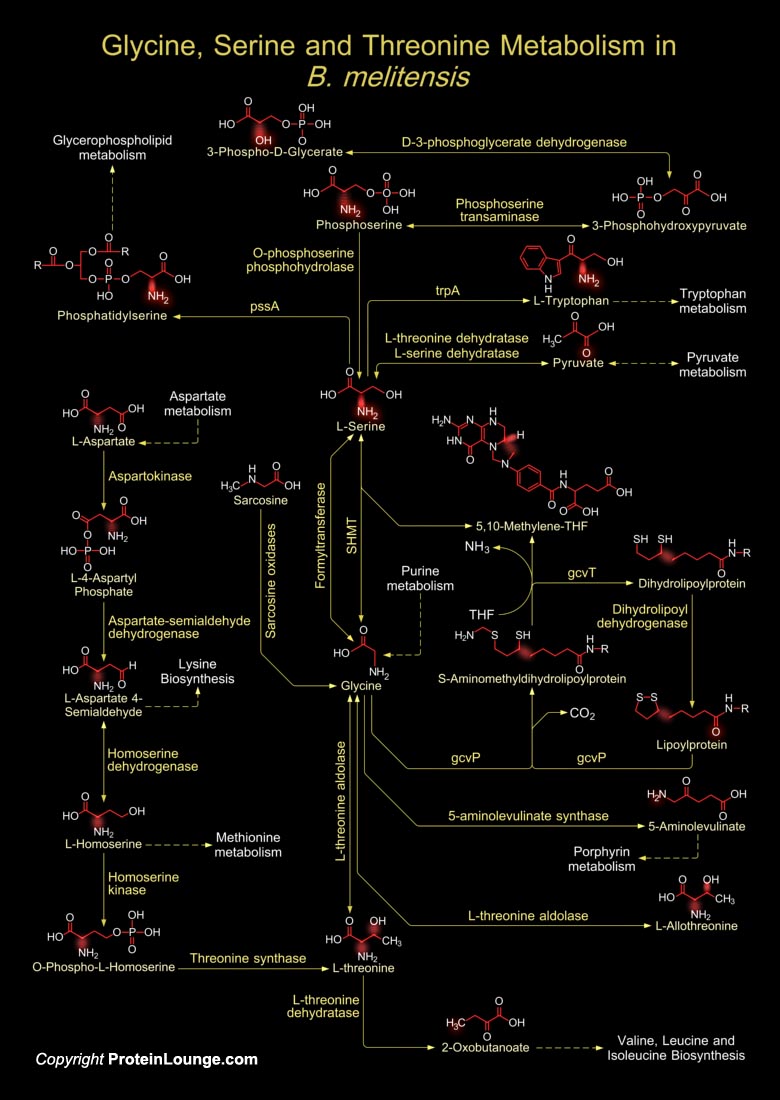
B. melitensis (Brucella melitensis) is a Gram-negative, aerobic, facultative intracellular bacterial pathogen that causes abortion in goats and sheep and Malta fever in humans. Species in the genus Brucella are the etiological agents of Brucellosis, a zoonotic disease endemic in many areas of the world, characterized by chronic infections in animals leading to abortion and infertility, and a systemic, febrile illness in humans. Brucella is facultative intracellular pathogens that enter the host through mucosal surfaces and are able to survive inside macrophages (Ref.1 & 2). The presence of S-LPS (Smooth Lipopolysaccharide) is an important virulence factor of these organisms. The role of the O-side chain or O-antigen of S-LPS in the survival of Brucella has not been[..]

